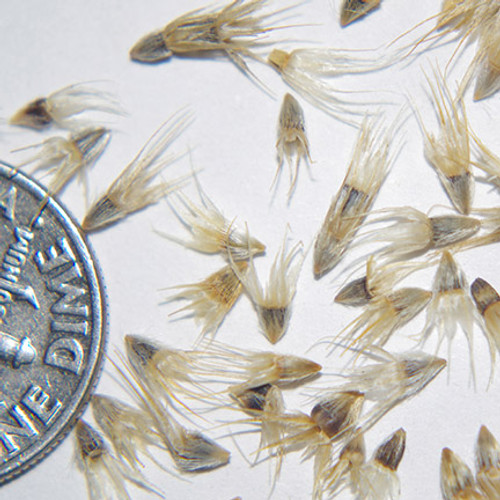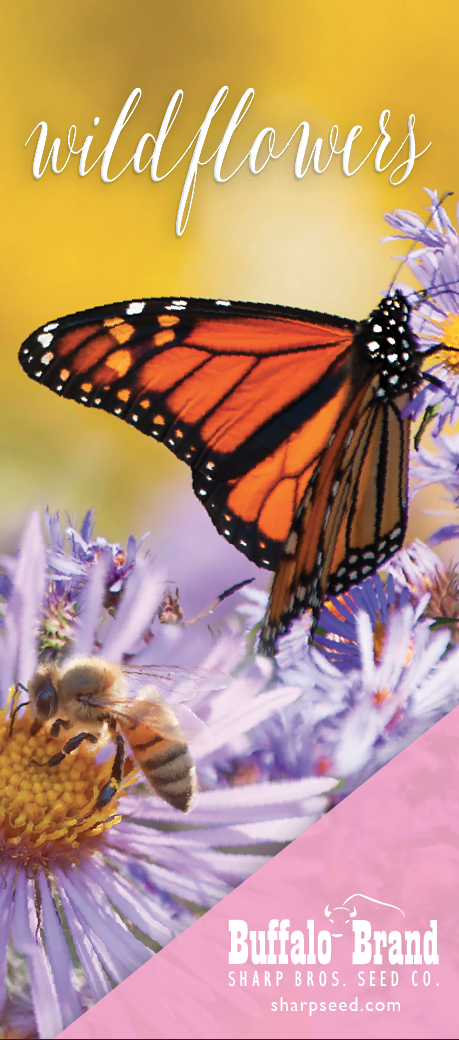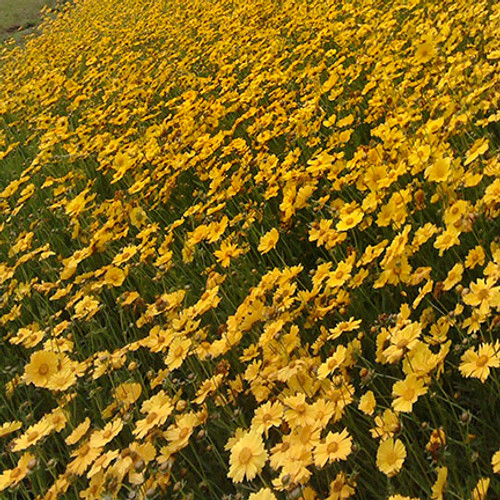-


Indian Blanket (Annual Gaillardia, Firewheel)
Indian Blanketflower is an annual forb that produces coralla red to reddish purple ray petals with a touch of yellow on the tips, during May-Sept. It is the state wildflower of Okalhoma and grows in rock, gravelly, or sandy soil types. Also know as...
-


Lanceleaf Coreopsis (Coreopsis lanceolata) offers showy, deep yellow flowers on tall stems in May and June. Coreopsis plants outgrow weeds and hold the soil. Showy flowers for spring Attracts butterflies Great in wildflower seed...
-


Leadplant is a subshrub to herbaceous perennial with multiple stems that can get to about 3 ft tall. Leaves are odd-pinnately compound and covered in dense lead-colored silver-gray hairs (giving the plant its common name). Purple flowers have one petal...
-

Lemon Beebalm (Lemon Mint, Lemon Bergamont)
Lemon Mint, also refered to as Lemon Beebalm or Lemon Bergamont, is an annual native across much of North America. Purple flowers attract large numbers of pollinators. Native Habitat: Prairie, Plains, Meadows, Pastures, Savannahs, Hillsides,...
-


Maximilian sunflower, is a tall, warm season, spreading, perennial forb which is a member of the true sunflower family. Large, showy, yellow blooms occur throughout the full 5ÛÔ7 feet height of the plant in great abundance during late summer...
-
 $33.00
$33.00Sold by the PLS pound Cowgirl's Delight wildflower mix is a blend of native wildflowers designed to provide blooms through the seasons. Beautiful way to provide food sources for wildlife and pollinators. Planting Rate: With...
-


Monarch Butterfly & Honey Bee Wildflower Mix
$116.00Pollen & Nectar for Bees & ButterfliesIncludes Butterfly Milkweed, essential for the development of Monarch Butterfly larva. This mix provides prolific pollen and nectar for honey bees, wild bees, and butterflies; early spring through late fall...
-


New England aster is a native perennial forb which grows from 2 ½ to 6.0 feet tall with hairy stems and leaves. The alternate leaves are up to 4 inches long and 1 inch wide, with broad, clasping bases and pointed tips. The individually stalked...
-


Pale Purple Coneflower (Echinacea pallida) has tall bare stems that are topped by lavender pink flowers with cone-shaped brown seed heads June-July. Good fresh cut flower or dried flower. Easy to establish Naturalizes well Food for...
-


Plains Coreopsis is a bright annual that flowers from June to Sept. Lots of very showy yellow flowers with red centers are produced on fairly large branched plants. Central disk is brown. Showy Flowers Attracts Butterflies Great in wildflower seed...
-

Purple Coneflower (Echinacea purpurea) is an easy-to-grow favorite with lots of rosy purple flowers with non-drooping petals around a brown cone-shaped seed head. Easy to establish in wide variety of sites Naturalizes well Food for...
-


Violet prairie clover is a native, warm-season legume which grows to a height of 30 to 90 cm. Several stems may grow from a single base. The flowers are pinkish-purple on elongated spikes which are 2-4 cm long. The flower head at the end of a wiry stem...
-
 $37.00
$37.00Mix Includes:Plains CoreopsisPurple Prairie CloverGreyhead Prairie ConeflowerIndian BlanketUpright Prairie Coneflower Sharp Brothers Seed offers a large number of individual varieties of wildflower seeds as well as regional mixes, specialty mixes...
-


Showy milkweed is a member of the milkweed family Asclepiadaceae (now placed in Apocynaceae, the dogbane family). Showy milkweed is a native herbaceous perennial from widespread rhizomes, which produce stems that grow to 1½ to 5 ft tall in summer...
-


Showy Partridge Pea Chamaecrista fasciculata is an annual erect legume plant that reaches a height of 1 to 3 feet. The leaves consist of 10 to 16 pairs of small, narrow leaflets that are somewhat delicate to the touch. The showy yellow flowers, about 1...
















